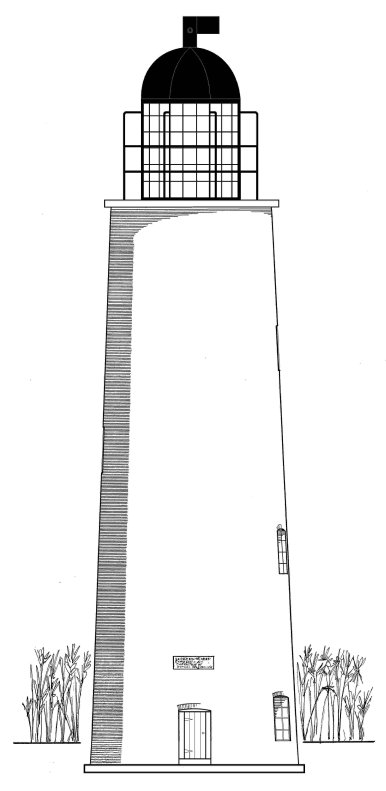In 1805, one of the first Mississippi River lighthouse designs was submitted to Washington by Barthelemy Lafon. He named his proposed tower "Phare du Mississipi" (misspelled in original), which essentially translates to “Mississippi [River] Lighthouse”. In a reference located on page 186 from an 1839 publication called "The Colombian Navigator; or Sailing Directory for the American Coasts and the West-Indies" it contains a brief description of the two lighthouses built on Frank's Island under a footnote titled "Missisipi Lighthouse" (misspelled in original). Once again, I would suggest the word "River" to be implied in the name. In some of the plans submitted to Congress by Benjamin Latrobe and his son, Henry, the structure was referred to as “The Lighthouse to be Erected at the Mouth of the Mississippi River”. In a book titled "The Domestic Architecture of Benjamin Henry Latrobe” by Michael W. Fazio and Professor Patrick A. Snadon, there are named references to the "Mississippi River Lighthouse". This moniker would have been appropriate since there were no other lighthouses being planned for on or near the Mississippi River at the time the first lighthouse was being constructed.
The first references I have found for Winslow Lewis’ lighthouse erected in 1823 refer to the tower as "North East Pass Light", “North East Pass Light-House”, or “North East Pass Light Station”. This naming is, for the most-part, consistent through 1859 as found in naval journals, Congressional Serial Sets, and excerpts from periodicals of the day. One reference in the 1858 edition of "The Merchants' Magazine and Commercial Review" refers to the tower as the “North East Pass Day Beacon” - confirming that the lantern had been extinguished in 1856. As far as I can tell, Samuel Wilson, Jr., by way of his HABS report, was the first person (at least in written form) to have referred to the “Frank’s Island Lighthouse” as it is known today. This is, of course, speculation on my part, and is certainly up for debate. I have also seen references to "Frank's Island Light", "Franks Island Light" or "Franks Island Lighthouse". The last two references are missing the apostrophe; but the proper name of the island, according to historical records, is Frank's Island.
Monday, September 3, 2007
Subscribe to:
Post Comments (Atom)





3 comments:
Zachary has confirmed for me the naming of the two lighthouses. According to David Cipra's first book on the subject (now out-of-print), "Lighthouses and Lightships of the Northern Gulf of Mexico", the first lighthouse was known as the "Mississippi River Light". This moniker was inherited by the second lighthouse until other lighthouses were erected at the South and Southwest passes. It was then known as the "Northeast Pass Light". After its lantern was extinguished in 1856, the lighthouse was officially renamed to the "Northeast Pass Day Beacon." The name "Frank's Island Lighthouse" was probably a locally given name.
Keep up the good work.
What a great web log. I spend hours on the net reading blogs, about tons of various subjects. I have to first of all give praise to whoever created your theme and second of all to you for writing what i can only describe as an fabulous article. I honestly believe there is a skill to writing articles that only very few posses and honestly you got it. The combining of demonstrative and upper-class content is by all odds super rare with the astronomic amount of blogs on the cyberspace.
Post a Comment